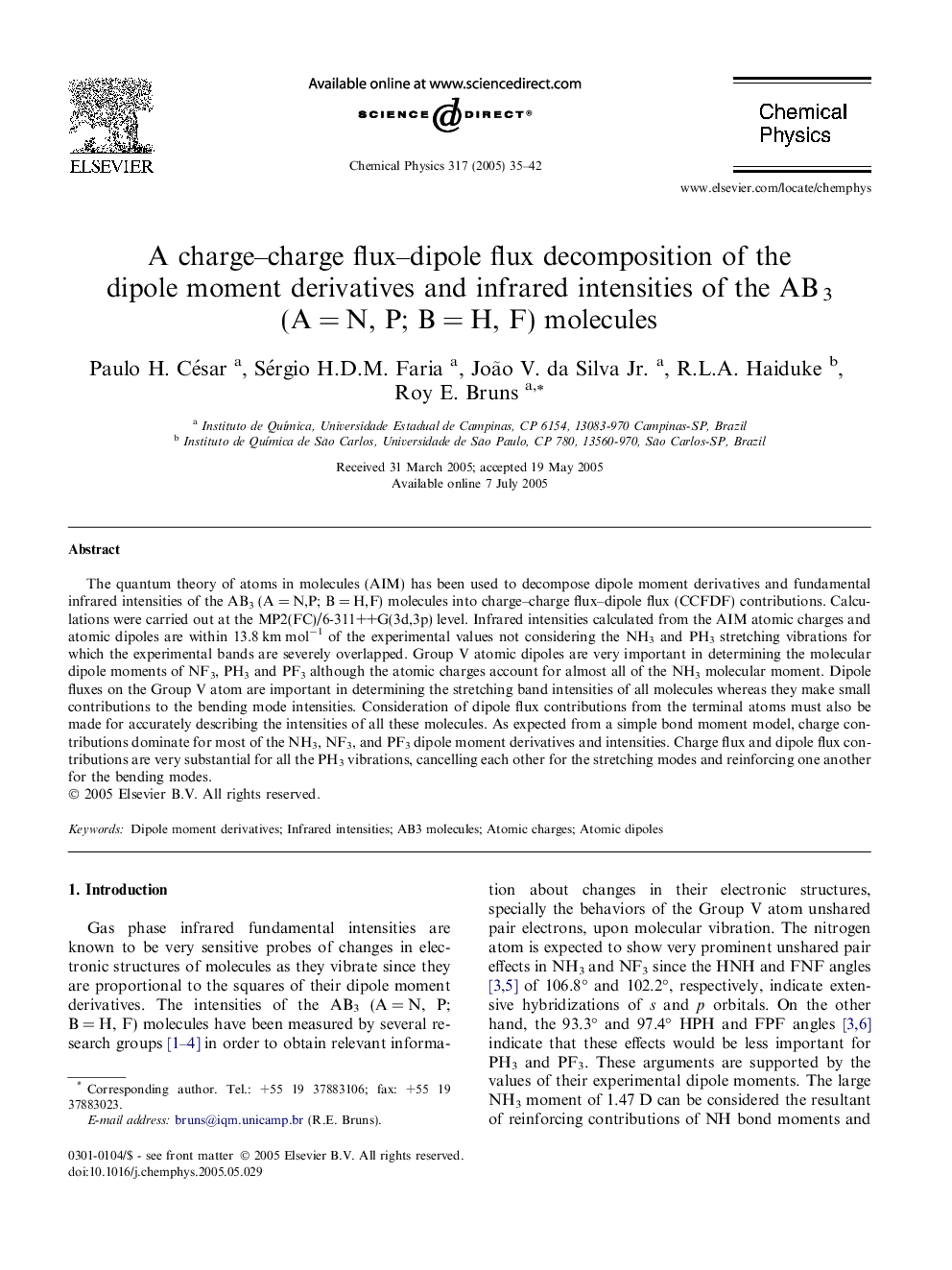| Article ID | Journal | Published Year | Pages | File Type |
|---|---|---|---|---|
| 9575212 | Chemical Physics | 2005 | 8 Pages |
Abstract
The quantum theory of atoms in molecules (AIM) has been used to decompose dipole moment derivatives and fundamental infrared intensities of the AB3 (A = N,P; B = H,F) molecules into charge-charge flux-dipole flux (CCFDF) contributions. Calculations were carried out at the MP2(FC)/6-311++G(3d,3p) level. Infrared intensities calculated from the AIM atomic charges and atomic dipoles are within 13.8 km molâ1 of the experimental values not considering the NH3 and PH3 stretching vibrations for which the experimental bands are severely overlapped. Group V atomic dipoles are very important in determining the molecular dipole moments of NF3, PH3 and PF3 although the atomic charges account for almost all of the NH3 molecular moment. Dipole fluxes on the Group V atom are important in determining the stretching band intensities of all molecules whereas they make small contributions to the bending mode intensities. Consideration of dipole flux contributions from the terminal atoms must also be made for accurately describing the intensities of all these molecules. As expected from a simple bond moment model, charge contributions dominate for most of the NH3, NF3, and PF3 dipole moment derivatives and intensities. Charge flux and dipole flux contributions are very substantial for all the PH3 vibrations, cancelling each other for the stretching modes and reinforcing one another for the bending modes.
Related Topics
Physical Sciences and Engineering
Chemistry
Physical and Theoretical Chemistry
Authors
Paulo H. César, Sérgio H.D.M. Faria, João V. Jr., R.L.A. Haiduke, Roy E. Bruns,
